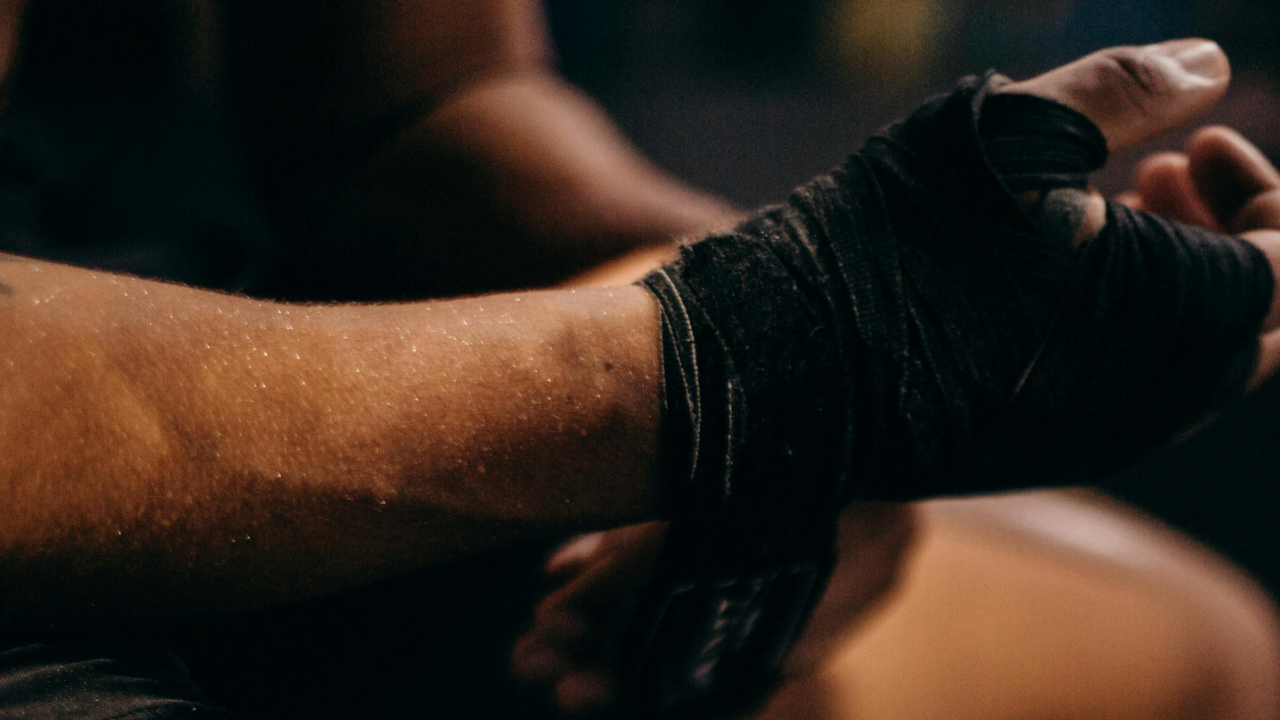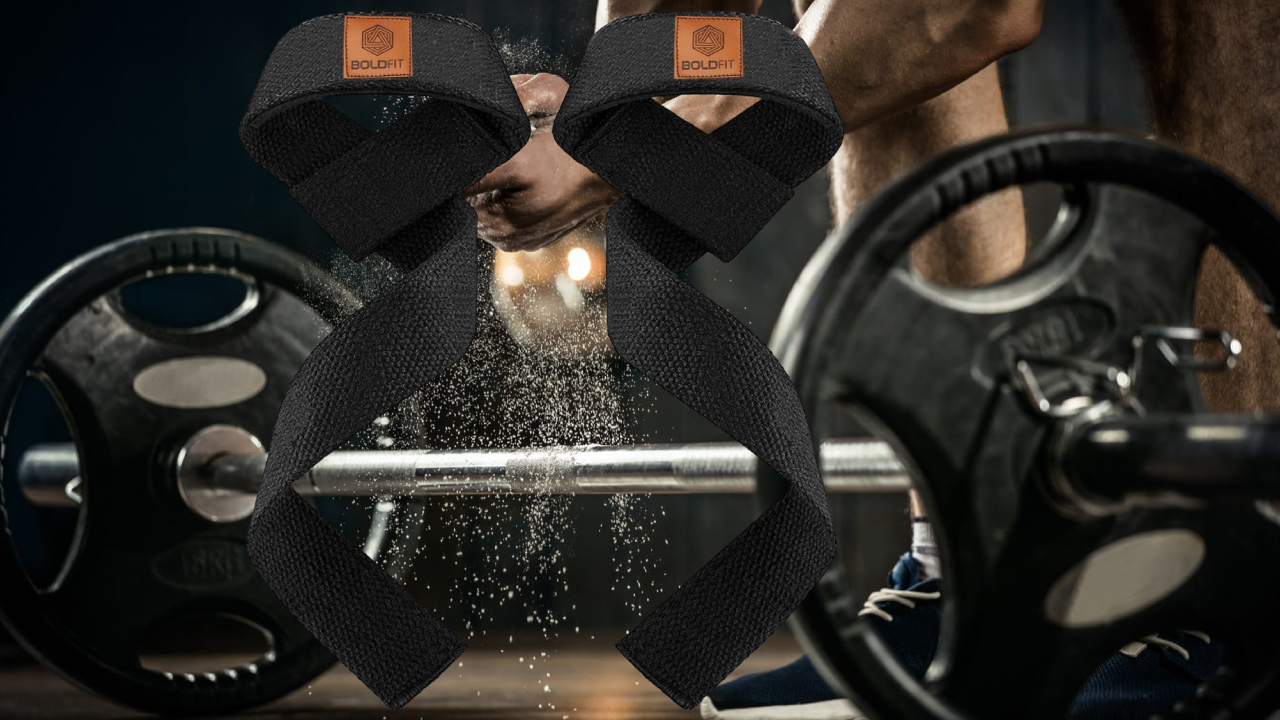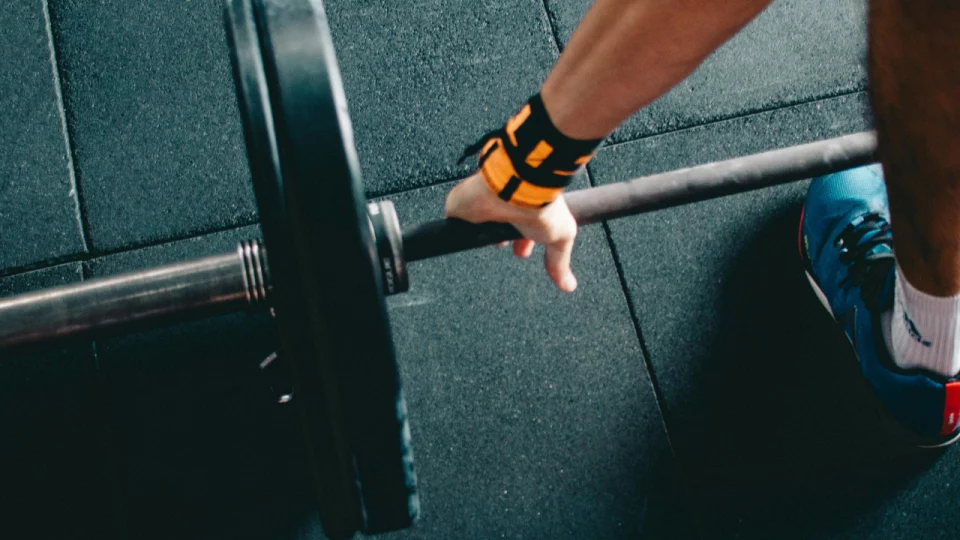Weightlifting and strength training have surged in popularity, and with it, the tools and accessories designed to optimize performance, safety, and technique. Among these tools, lifting straps are a frequent topic of debate in fitness circles.
While some lifters swear by them, claiming they are essential for improving grip and maximizing lifting capacity, others feel that lifting straps are a crutch that can hinder grip strength development and overall progress.
Pros and cons of using lifting straps, when and how to use them properly, and offers advice on whether they are the right choice for your fitness journey.
Table of Contents
1. What Are Lifting Straps?
Lifting straps are simple yet effective pieces of equipment designed to help lifters maintain a firm grip on the barbell or dumbbell, especially during heavy lifts. They are usually made of durable fabric, leather, or synthetic materials that loop around the wrist and bar, allowing the lifter to create a secure connection with the weight. When used correctly, lifting straps can provide significant support for exercises that typically challenge grip strength, such as deadlifts, rows, shrugs, and other pulling exercises.
Lifting straps come in several varieties, with different designs intended for various types of training. The two most common types are:
- Loop Straps: Basic in design, loop straps wrap around the wrist and barbell. They offer strong support and are commonly used for heavy lifts.
- Figure 8 Straps: Named for their shape, figure 8 straps are often preferred for powerlifting. They provide a more secure hold, especially for deadlifts.
- Lasso Straps: Lasso straps feature an adjustable loop that can be tightened around the wrist, offering versatility and adaptability for different grip needs.
2. Advantages of Using Lifting Straps

Lifting straps can provide several benefits, particularly for lifters aiming to work with heavier weights. Some of the primary advantages include:
Increased Load Capacity
One of the most compelling reasons lifters choose straps is the ability to handle heavier weights. When grip strength is the limiting factor, using straps can help target larger muscle groups without letting a weak grip become the bottleneck. For instance, in a deadlift, your forearms may give out before your back and leg muscles do. Straps can alleviate this issue, enabling you to lift beyond your natural grip strength and build more muscle in target areas.
Improved Focus on Target Muscles
Using straps can help isolate specific muscle groups better by removing grip strength from the equation. For example, if you’re performing rows and your grip starts to fatigue before your back muscles, straps can allow you to focus more fully on contracting your back muscles rather than worrying about losing your hold on the weight. This is particularly beneficial for exercises where you’re primarily targeting large muscle groups, such as the lats or traps, which may otherwise be limited by grip fatigue.
Reduced Forearm Fatigue
Grip-intensive exercises can lead to forearm fatigue, which may interfere with your ability to train other upper-body muscles later in your workout. By using straps, you reduce the strain on your forearms, allowing you to perform more sets and repetitions without compromising form or experiencing premature fatigue in the muscles responsible for your grip.
Safety and Injury Prevention
When lifting heavy weights, grip fatigue can increase the risk of accidental drops or form breakdown, leading to potential injuries. By using straps, lifters can secure a more consistent and stable hold on the bar, reducing the likelihood of accidents caused by a sudden slip. Additionally, straps can be beneficial for lifters with prior wrist or hand injuries, allowing them to train without exacerbating existing issues.
Overcoming Plateaus
Using lifting straps can be a helpful strategy for breaking through strength plateaus, particularly if grip strength is holding you back from lifting heavier weights. For instance, if you’ve been stuck at a certain weight for your deadlifts because your grip gives out, straps can allow you to push past this point, stimulating new muscle growth and strength gains.
3. Disadvantages of Using Lifting Straps
While there are benefits to using lifting straps, they also have drawbacks. Some lifters argue that straps can impede grip strength development and overall progress. Here are the main disadvantages to consider:
Inhibited Grip Strength Development
One of the primary criticisms of lifting straps is that they can hinder grip strength development. Relying on straps for all your heavy lifts can prevent your forearm muscles from adapting and growing stronger in response to the demands of heavy lifting. If you consistently use straps without working on grip strength independently, you might develop a strength imbalance between your grip and the rest of your body, which could become a limiting factor in your overall progress.
Potential Dependency
Some lifters become reliant on lifting straps, using them for nearly every exercise, even when it’s not necessary. This dependency can create a situation where a lifter feels incapable of performing certain lifts without straps, reducing their overall confidence and versatility as a lifter. It’s important to strike a balance and know when to use straps versus when to rely on natural grip strength.
Limited Functional Strength
Functional strength refers to strength that can be applied to real-life activities. Building functional grip strength is beneficial for sports, outdoor activities, and daily tasks that involve carrying, pulling, or lifting. Overuse of straps can lead to underdeveloped grip strength, which might limit your ability to perform these functional movements effectively.
Increased Injury Risk in Certain Scenarios
While lifting straps can reduce the risk of grip-related injuries, they may increase the risk of injuries in certain situations. For instance, if a lifter attempts to hold onto a very heavy load that would naturally slip out of their grip, they might sustain an injury by forcing their body to handle a weight that their grip would have otherwise let go. Straps can sometimes mask the natural limitations of the body, potentially leading to overexertion.
4. When Should You Use Lifting Straps?

Given the benefits and potential downsides, it’s important to use lifting straps strategically. Here are scenarios where lifting straps can be particularly advantageous:
Heavy Lifts with Large Muscle Groups
For exercises that primarily target large muscle groups and require maximal loads, like deadlifts, barbell rows, and shrugs, lifting straps can be highly effective. These lifts often demand more grip strength than smaller, accessory lifts, so using straps can allow you to handle heavier weights without compromising form or performance.
Toward the End of a Workout
If you’re performing an intense workout that includes several pulling exercises, your grip strength may be fatigued by the time you reach your final sets. Using lifting straps toward the end of your workout can help you maintain performance and ensure you’re effectively targeting your intended muscle groups, even when grip fatigue has set in.
When Training Beyond Failure
For advanced lifters aiming to push their limits by performing training techniques such as drop sets, forced reps, or negatives, lifting straps can allow for added support and control. This enables you to focus on muscle exhaustion without prematurely ending the set due to grip failure.
During High-Volume Training Cycles
If you’re going through a high-volume training cycle, where you’re performing multiple sets and reps, using lifting straps can help reduce the load on your grip and forearms, allowing you to manage a larger training volume without burning out early in your workout.
5. When Not to Use Lifting Straps
While lifting straps have their place, there are situations where it’s best to avoid them:
When Developing Grip Strength
If you’re a beginner or looking to improve your grip strength, avoid using straps on lighter weights or exercises that you can perform with your natural grip. Building grip strength is essential for overall lifting performance, and relying on straps too early can limit your progress.
During Functional Training
Functional training aims to develop strength that can be applied outside the gym. If your goal is to build real-world strength, such as carrying groceries, lifting heavy boxes, or performing manual tasks, it’s better to avoid straps for most exercises. This way, you’re developing the grip and forearm strength needed for real-life activities.
During Accessory Exercises
For accessory exercises that focus on smaller muscle groups, like bicep curls or lateral raises, straps are typically unnecessary and may hinder your ability to develop grip strength. Focus on using a natural grip for these exercises to enhance overall grip and forearm development.
Alternatives to Lifting Straps
If you’re hesitant to use lifting straps or want to improve grip strength, several alternative tools and techniques can support your goals:
- Grip Strength Exercises: Exercises like farmer’s walks, plate pinches, and wrist curls specifically target the forearm and grip muscles, helping build the strength needed for heavy lifts.
- Chalk: Weightlifting chalk can improve grip without eliminating the need for grip strength. Chalk absorbs sweat and provides better friction, helping lifters maintain control during heavy lifts.
- Mixed Grip and Hook Grip: Techniques like the mixed grip (one hand facing forward, the other facing backward) and the hook grip (thumb wrapped under fingers) can improve grip strength during deadlifts and other heavy lifts without requiring straps.
- Grip Trainers: Tools like grip trainers and grippers allow you to work on your grip strength independently from your regular workouts.
Final Verdict: Should You Use Lifting Straps?
Deciding whether to use lifting straps depends on your goals, experience level, and training style. Here are some general recommendations:
- For Beginners: Focus on building grip strength naturally before relying on straps. Start using them sparingly, mainly for heavy compound lifts or when grip fatigue limits your progress.
- For Intermediate Lifters: Use straps strategically on high-load, high-volume days to maximize performance on exercises like deadlifts or rows. Balance your use of straps with grip-strengthening exercises.
- For Advanced Lifters: Incorporate straps as needed for heavy lifts, especially when training toward strength goals or specific competitions. Advanced lifters often benefit from using straps to overcome plateaus and manage high training volumes without compromising grip strength.
Lifting straps can be a valuable tool, but like any accessory, they should be used mindfully and strategically. With a balanced approach, you can maximize your performance and muscle growth while also building a strong, functional grip that supports your overall lifting progress.
